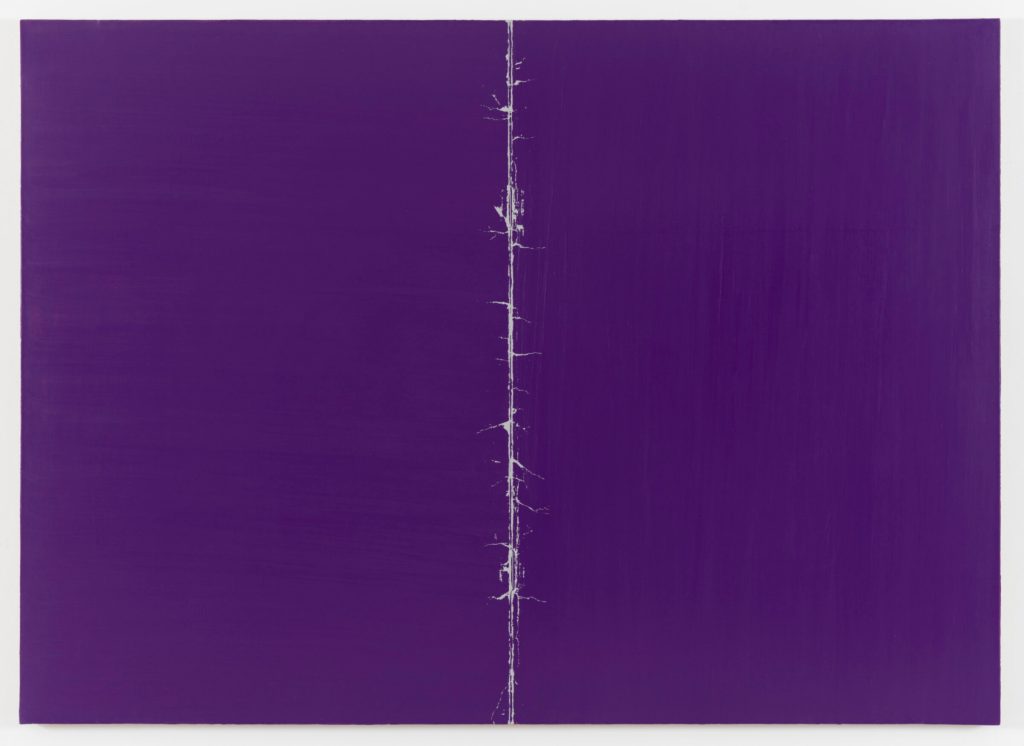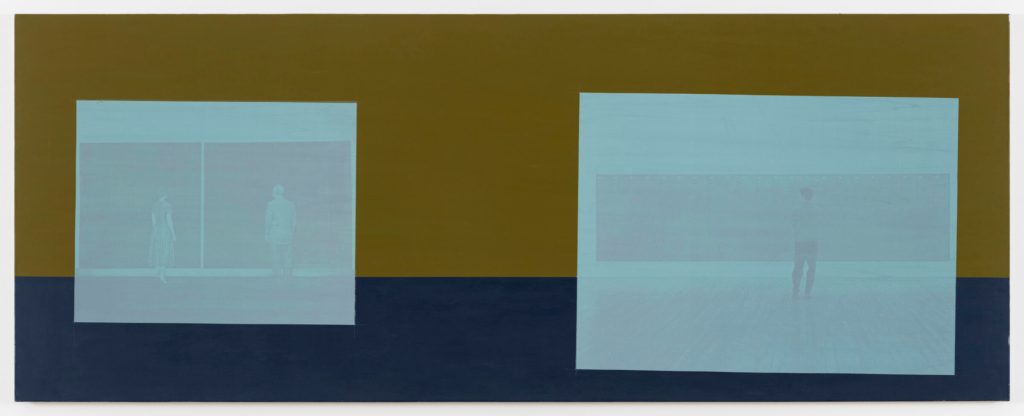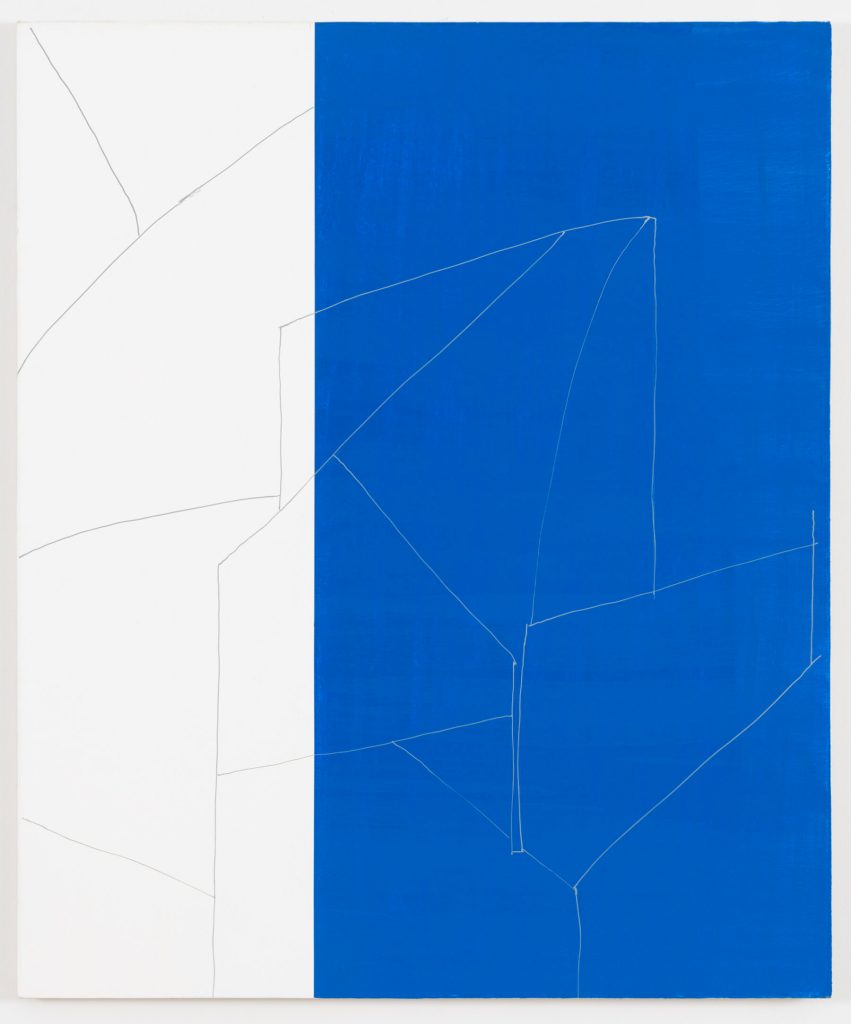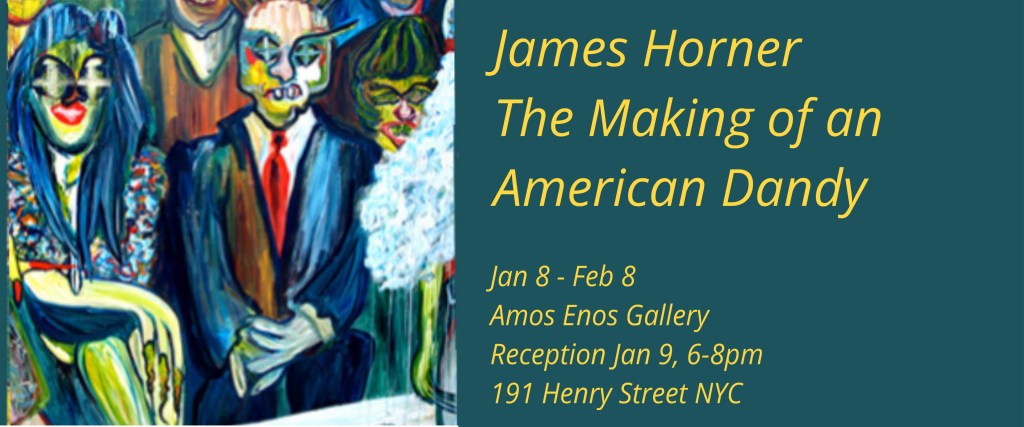
Contributed by Adam Simon / Sometime in the early 1980s, a mural appeared on West Broadway between Spring and Broome streets in New York City, declaring in multi-colored capital letters, “I Am The Best Artist” signed, René. This, and other versions of the mural, were generally considered an embarrassment in the local artist community. I thought the mural, by René Moncada, was an interestingly unsubtle parody of artists’ competition and quest for uniqueness. I thought of this mural while viewing David Diao’s solo exhibition, On Barnett Newman, 1991-2023, on view at Greene Naftali. The exhibition comprises twelve paintings dedicated to the work of another painter, including works that look like an archivist’s inventory.

That inventory is the functional opposite of inspiration is not lost on Diao. This dichotomy is reflective of a lifetime of work by Diao that demonstrates the vitality and versatility of painting as a medium while seeming to negate features presumed essential to it. He has long resisted painterly expression, identifiable emotion, or the pull of implied narrative. He gives us instead what he has called facticity, the quality of being factual. His paintings are populated by quantitative data, lists of names, dates, and dimensions. He has made series that document his annual painting sales and the square footage of the different studios he has occupied. Somehow, within this narrow framework that seems designed for an accountant or an insurance executive, his paintings can be extremely moving.

Diao is that rare example of a conceptual painter, almost a contradiction in terms. Most painters assigned that rubric are ones employing certain kinds of subject matter. I would say that Diao is a conceptual painter and Ed Ruscha is a painter of subjects. The life and work of Barnett Newman is the subject of the paintings in this exhibition, but the decision to employ this subject suggests something more. Was Newman a subject for Diao that evolved into a concept? The scope of the project, which covers a span of 32 years, suggests this. Is Diao paying homage to Newman or is Newman like the character Christian in the play, Cyrano de Bergerac, the historical figure through which Diao speaks?

In the novel, The Double, by José Saramago, a man discovers that another version of himself is living in the same city and sets out to find him. There is that kind of doubling in this exhibition. Newman and Diao both come from families that were displaced from their homelands – Poland and China, respectively. When Diao first arrived in New York after college he worked at the Guggenheim Museum where he helped hang Newman’s series, “Stations of the Cross.”The two artists share left wing politics and an intellectual approach to abstract painting. There is a softness and slowness to the way each combines large expanses of solid color and interrupts them with discrete elements. While these elements remain resolutely abstract in Newman, they usually consist of biographical information or accumulations of data in Diao, connecting the open field of Newman’s painting with the flatland of information display. Diao’s insertion of the mundane realities of what it means to live as an artist would have clashed with the oceanic feeling sought by mid-twentieth-century abstract painters. Data engages the naming part of the mind that most abstract painting aims to circumvent. Yet the kind of quantitative, chronological data Diao employs has things in common with Newman’s painting. For all its specificity, the information is delivered with a certain neutrality – a lack of affect not unlike what distinguished Newman’s work from that of his contemporaries.


Several of the paintings at Greene Naftali do not include data. Looking 2, one of the first paintings we see upon entering the main gallery, is composed of two silk-screened rectangles situated within what appears to be an interior space. One of the rectangles shows Newman and an unidentified woman (thought to be his wife) standing in front of one of his paintings. The other shows Diao in front of his painting, Resumé which chronicles his exhibition history. Other paintings configure representations of works by Newman in such a way that they register as unique compositions. Hanging by Chains mimics a Newman composition but replaces his signature ‘zips’ with silk-screened chains, alluding to the heavy chains Newman used to hang work in his home. One fascinating inclusion is BN: Cut Up Painting, referencing a painting that Newman left instructions to destroy after his death. The fragments are now at Harvard University, where they are being re-assembled. The painting has never been exhibited.

The show conveys a sense that Diao is working out his complicated relationship to modernism through Newman’s work and life, employing both critique and embrace. He seems to revel in the contradiction of paying homage to a master of the ineffable by way of a vocabulary of specific information that seems so at odds with Minimalist painting. At the same time, though, the charts and diagrams, chronologies and floor plans, are themselves minimal: nothing but the facts. Whereas Diao’s diagrammatic renderings once would have read as an assault on the high mindedness associated with the modernist canon, in today’s information-saturated visual environment these works feel close in spirit to the iconic works they might once have been seen as parodying.

We are still left to untangle form from content. How do we square the names, dates and cut-to-scale vinyl rectangles that Diao links to Newman’s artworks, with Diao’s own masterful paint handling, shifting from gloss to mat, the light generated by a field of chalky blue seamlessly combined with vinyl appliqué, and glitches, stray pencil lines and nuanced washes that show these to be not charts and diagrams but rather paintings of considerable beauty?

By evoking a painter who is not Diao, these paintings undermine the idea of subjectivity. Although self-erasure as art didn’t originate with him – in the 1980s, artists like Sherrie Levine, and before that Raymond Pettibon and Elaine Sturtevant, mimicked or reproduced works of other artists – what Diao is doing is more complicated. He elides his own presence in the work, by consistently referencing Newman and obsessively displaying information. Yet the work retains a singular aura, owing in part to the matter-of-fact way the paint is applied and sits on the surface, the color and scale and the slowness of the visual field. All of it figures in what painters refer to as touch. Touch figures in his paintings in a way that suggests a ghost in the tabulator’s machine. While Diao’s cataloging of Newman’s life and works may imply demystification, his paintings in their fullness suggest an embrace of Newman as an artist, and more broadly of the capacity of painting to generate complex, even contradictory, thoughts.
“David Diao: On Barnett Newman, 1991–2023,” Greene Naftali, 508 W. 26th Street, 8th Floor, New York, NY. Through January 13, 2024.
About the Author: Adam Simon is a New York artist and writer. His recent paintings combine corporate logotypes, stock photography, and tropes of modernist design.
NOTE: The Two Coats of Paint 2023 Year-end Fundraising Campaign is in the final weeks, and our goal this year is to reach 100% reader and gallery participation. If you enjoy the artist interviews, exhibition reviews, NYC and Out-of-Town Selected Gallery Guides, and other Two Coats painting-cenric content, this is your opportunity to be a part of it. Please consider making a tax deductible contribution to support the project in 2024. Thank you for all your help keeping the conversation going.





















What a great pleasure to read! Adam, your writing is so enlightening and insightful – glad to have read this before seeing the work, which is the reverse usually for me.
And I can see a collection of your reviews, which clearly are related to the interests in your own work. Bravo!
Especially struck by this telling passage: “Whereas Diao’s diagrammatic renderings once would have read as an assault on the high mindedness associated with the modernist canon, in today’s information-saturated visual environment these works feel close in spirit to the iconic works they might once have been seen as parodying.”
Thanks Adam